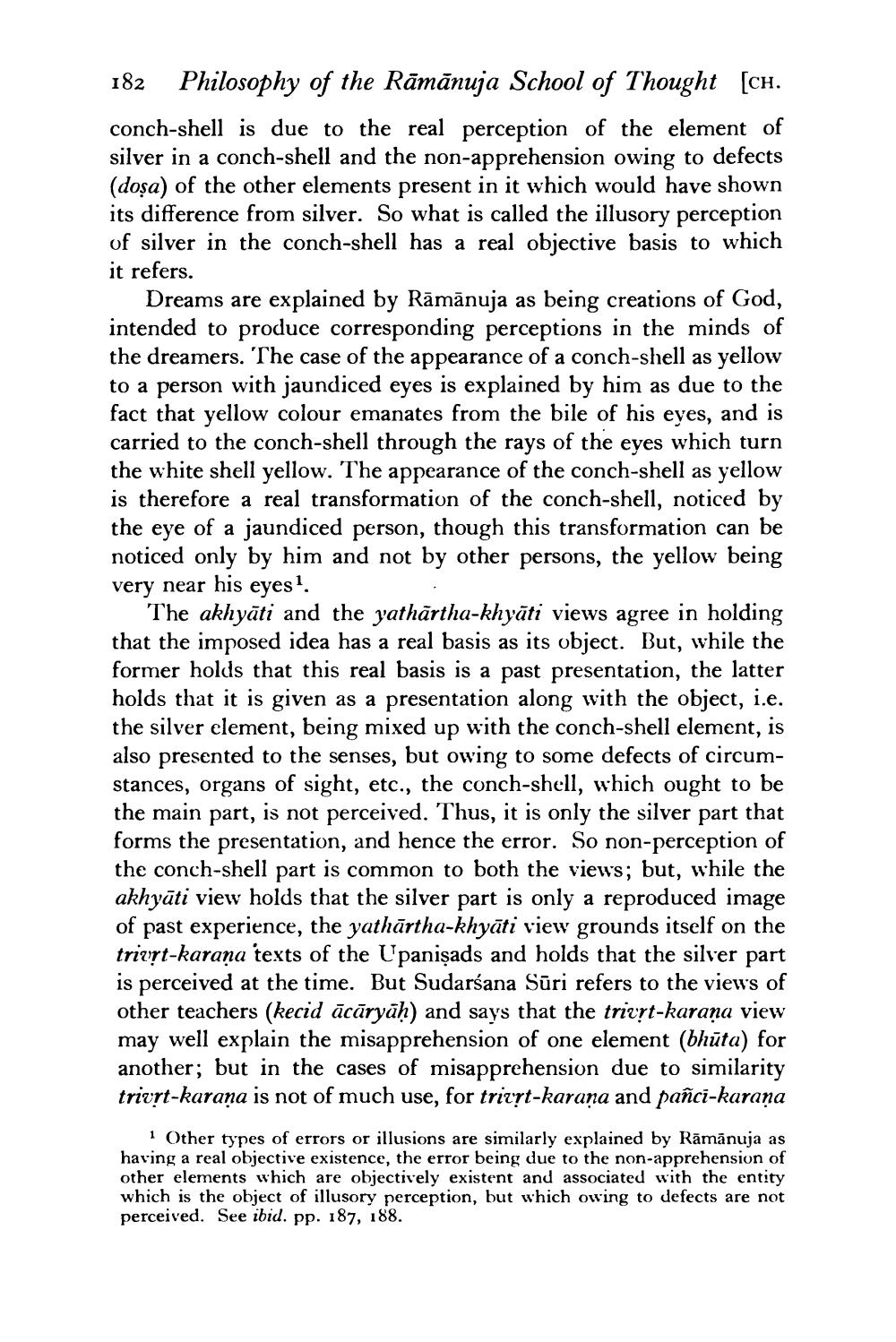________________
182 Philosophy of the Rāmānuja School of Thought [ch. conch-shell is due to the real perception of the element of silver in a conch-shell and the non-apprehension owing to defects (doșa) of the other elements present in it which would have shown its difference from silver. So what is called the illusory perception of silver in the conch-shell has a real objective basis to which it refers.
Dreams are explained by Rāmānuja as being creations of God, intended to produce corresponding perceptions in the minds of the dreamers. The case of the appearance of a conch-shell as yellow to a person with jaundiced eyes is explained by him as due to the fact that yellow colour emanates from the bile of his eyes, and is carried to the conch-shell through the rays of the eyes which turn the white shell yellow. The appearance of the conch-shell as yellow is therefore a real transformation of the conch-shell, noticed by the eye of a jaundiced person, though this transformation can be noticed only by him and not by other persons, the yellow being very near his eyes?
The akhyāti and the yathārtha-khyāti views agree in holding that the imposed idea has a real basis as its object. But, while the former holds that this real basis is a past presentation, the latter holds that it is given as a presentation along with the object, i.e. the silver element, being mixed up with the conch-shell element, is also presented to the senses, but owing to some defects of circumstances, organs of sight, etc., the conch-shell, which ought to be the main part, is not perceived. Thus, it is only the silver part that forms the presentation, and hence the error. So non-perception of the conch-shell part is common to both the views; but, while the akhyāti view holds that the silver part is only a reproduced image of past experience, the yathārtha-khyāti view grounds itself on the triurt-karana texts of the L'panişads and holds that the silver part is perceived at the time. But Sudarśana Sūri refers to the views of other teachers (kecid ācāryāḥ) and says that the trivrt-karaņa view may well explain the misapprehension of one element (bhūta) for another; but in the cases of misapprehension due to similarity trivst-karana is not of much use, for trivịt-karana and pañci-karaña
1 Other types of errors or illusions are similarly explained by Rāmānuja as having a real objective existence, the error being due to the non-apprehension of other elements which are objectively existent and associated with the entity which is the object of illusory perception, but which owing to defects are not perceived. See ibid. pp. 187, 188.




